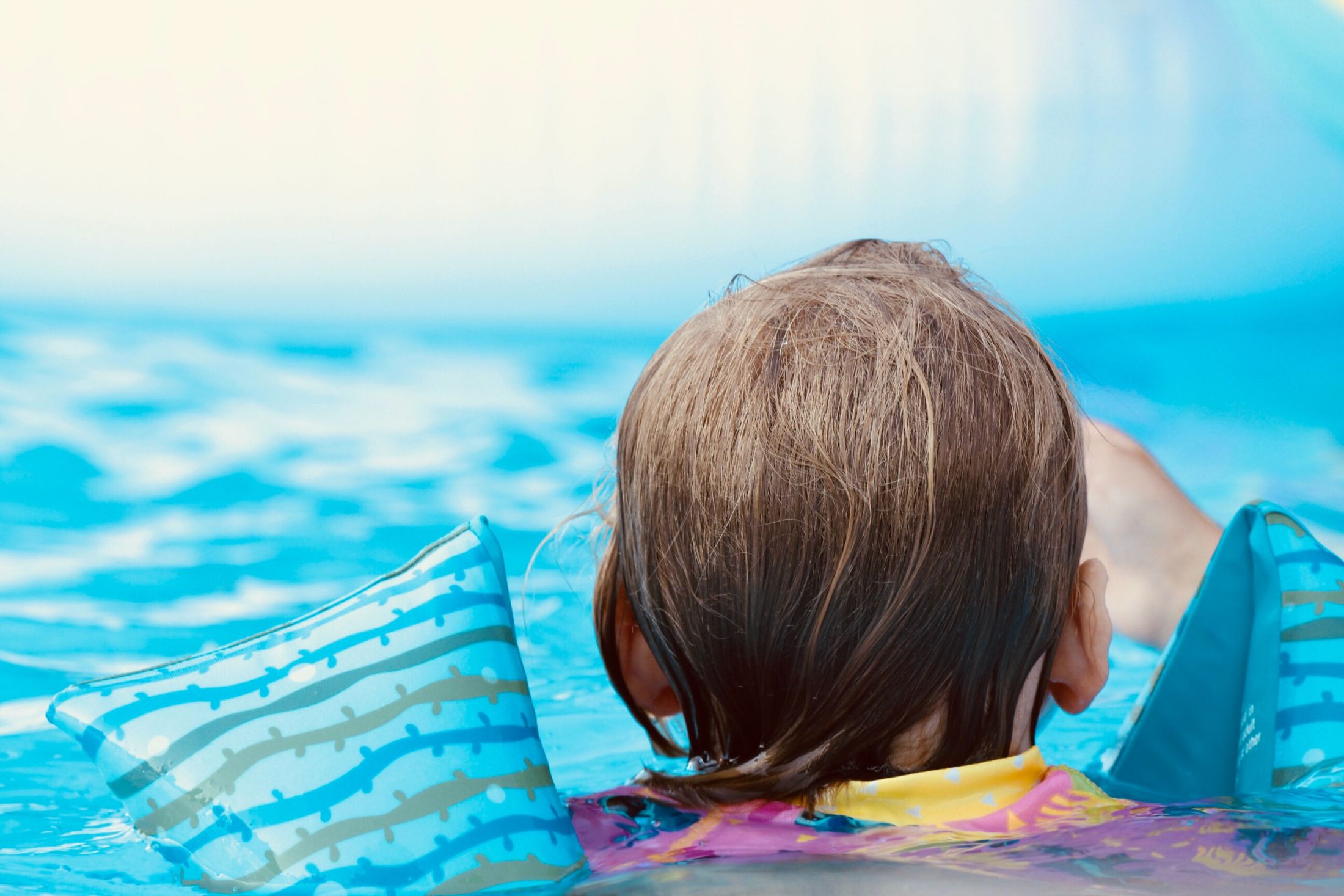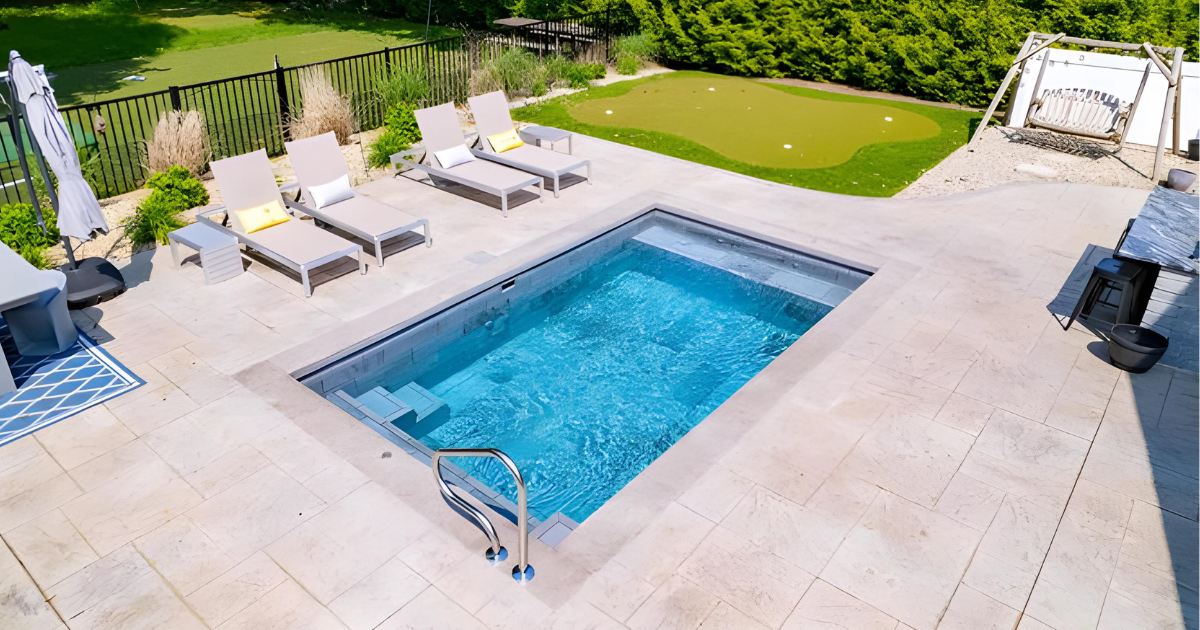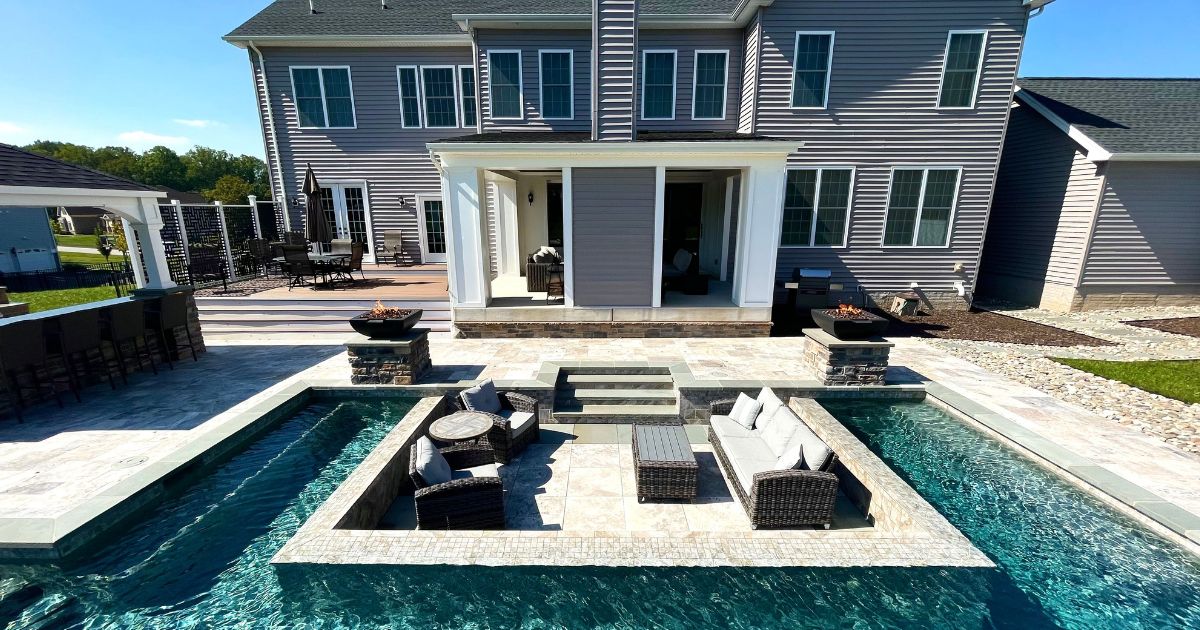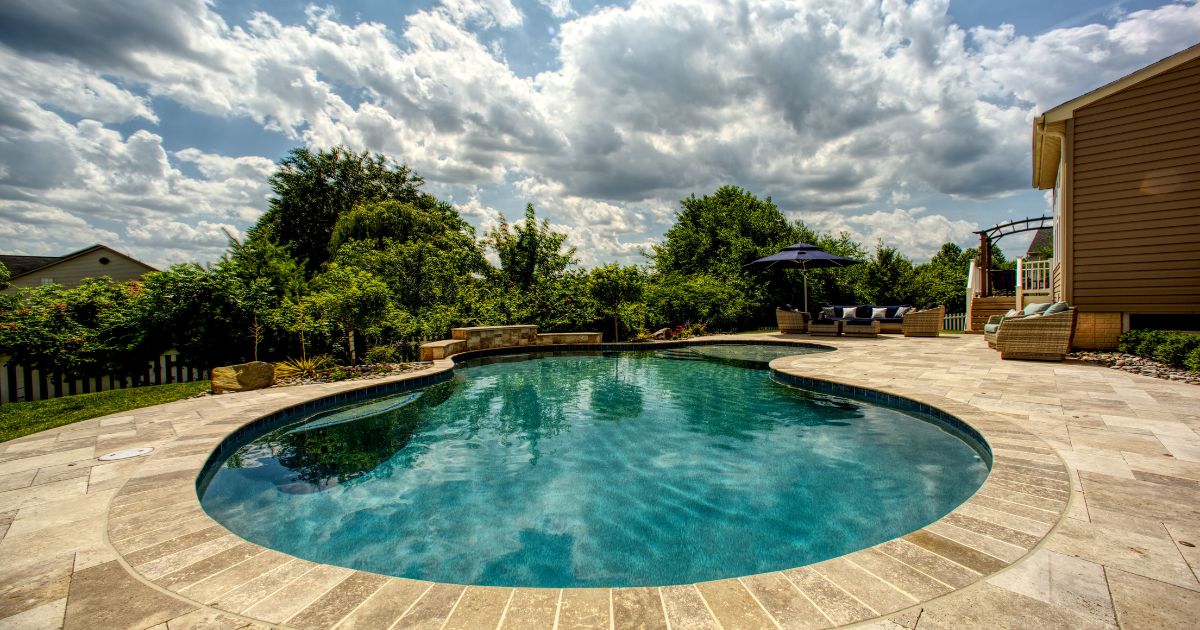Wondering how you can get the benefits of living waterside in a small backyard? Then…

Salt Water Pool Care Tips
So you’ve opted for the luxurious feel of an inground salt water pool. Like the ocean, the water in your salt water pool feels much softer than the water in a traditional chlorine pool. If you have a salt water pool, you already know that the salt chlorine generator converts salt to chlorine. That saves you a bit of work, and saves money on chemicals. But you still have to put some work in to keep your pool in top shape. We’ve put together these salt water pool care tips so you can see what’s involved.
There are a number of things you need to do to keep your pool clean and keep your salt water generator running. Many of these are similar to what you would do with a chlorine pool, but slightly different. And when it comes to winterizing your salt water pool, we highly recommend hiring a professional.
Daily Salt Water Pool Care Tasks
These tasks are pretty simple:
- Skim or pick up an visible debris in the pool
- Clear the skimmer
- Empty the pump basket
Keeping your pool and pool filter as clean as possible saves you money on chemicals and prolongs the life of your pool pump.
Weekly Salt Water Pool Care Tasks
It’s easiest if you do these tasks on the same day of the week every week. That way you don’t forget.
Pool Water Testing
Each week, you should perform pool water testing. This checks your pool water’s pH and chlorine levels to ensure your salt chlorine generator is working as it should.
Your pool’s pH level should be between 7.2-7.6. The free chlorine level should be between 1.0 and 3.0 ppm. Follow the directions on the test kit, and the manual that came with your salt water chlorine generator to make adjustments as needed.
Monthly Salt Water Pool Care Tasks
The daily and weekly salt water pool care tasks are relatively simpler. Some of the monthly tasks get a little more complicated. You’ll be balancing chemicals and cleaning the pool thoroughly. Decide if it’s something you want to do, or if you want a pool service to handle it.
Check Salinity
You need to check the salinity, or salt level, in your pool water each month. It should be between 2700-4500 ppm, but each salt chlorine generator is unique. Always check your manufacturer’s instructions to make sure you have the proper amount of pool salt.
Some generators like the Pentair IntelliChlor® come with their own control panels that will display the water’s salinity level. But if yours doesn’t, you will need to use a salt meter or testing kit to check the salinity level.
Add salt based on what the manufacturer’s instructions say. Adding too much salt may damage the unit.
Check Alkalinity
Proper alkalinity helps keep your pool’s pH level where it should be. If your pool water is cloudy, you may have high alkalinity. On the flip side, low alkalinity can cause corrosion and pool damage.
The optimal alkalinity level is between 80 and 120 ppm. To raise alkalinity, you will add sodium bicarbonate. To lower it, you can add muriatic acid or sodium bisulphate. You need to add the chemicals slowly, and need to retest every 24 hours.
Check Cyanuric Acid
Cyanuric acid, or CYA, acts as a stabilizer for your pool water. A CYA stabilizer prevents UV rays from eating up the chlorine. And a salt water pool needs more cyanuric acid. The level should be between 70 and 80 ppm. Raise the level by adding more. To lower the level, you will need to dilute your pool water. In other words, drain some water, and then add fresh water.
Check Calcium Hardness
Calcium hardness is important to keep in check. High levels lead to unsightly scaling, and low levels lead to corrosion. You want your calcium hardness level to be between 200-400 ppm.
Lowering the calcium level can be done by diluting the water, but that can get expensive. The most common solution is to use a flocculant. A flocculant makes loose calcium deposits clump together so you can skim or vacuum them out.
Quarterly Salt Water Pool Care Tasks
Every three months, check your salt chlorine generator. Your unit may have an alert that will signal if something is wrong, but if it doesn’t, be sure to check it. Again, follow your owner’s manual, but essentially, you turn the power to the unit off, and open it up.
Look for any buildup, and if there’s none or very little rinse if off with fresh water and put everything back. If you notice quite a bit of buildup, you will need to clean the salt chlorine generator thoroughly.
To to this, you can use a brush to scrub off the scale, and then use a hose on jet setting to rinse it off. If that doesn’t get rid of the scale, you may need to soak the unit in a mild hydrochloric acid wash. Again, your owner’s manual should go over this in detail.
Winterizing Your Salt Water Pool
As with a chlorine inground pool, we recommend hiring a professional to winterize your salt water pool. There are a lot of steps in winterizing your pool, and if you mess one up, you can seriously damage the pool equipment.
Hire a Pool Care Company
The easiest way to ensure proper salt water pool care is to hire a pool care company. Be sure to look for a salt water pool maintenance company that has experience with salt water pools. You invested extra money in your salt water pool system, so you want to make sure it is well taken care of.




